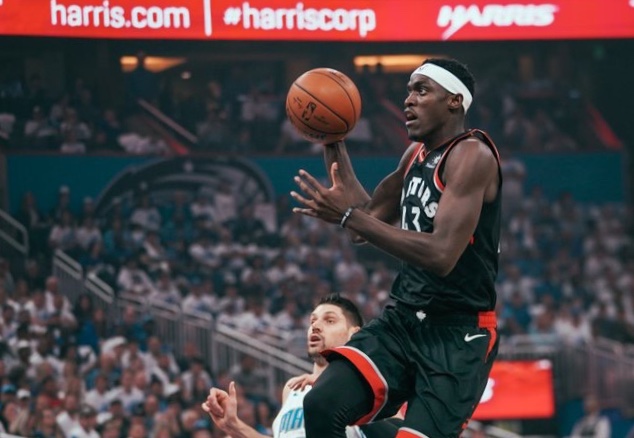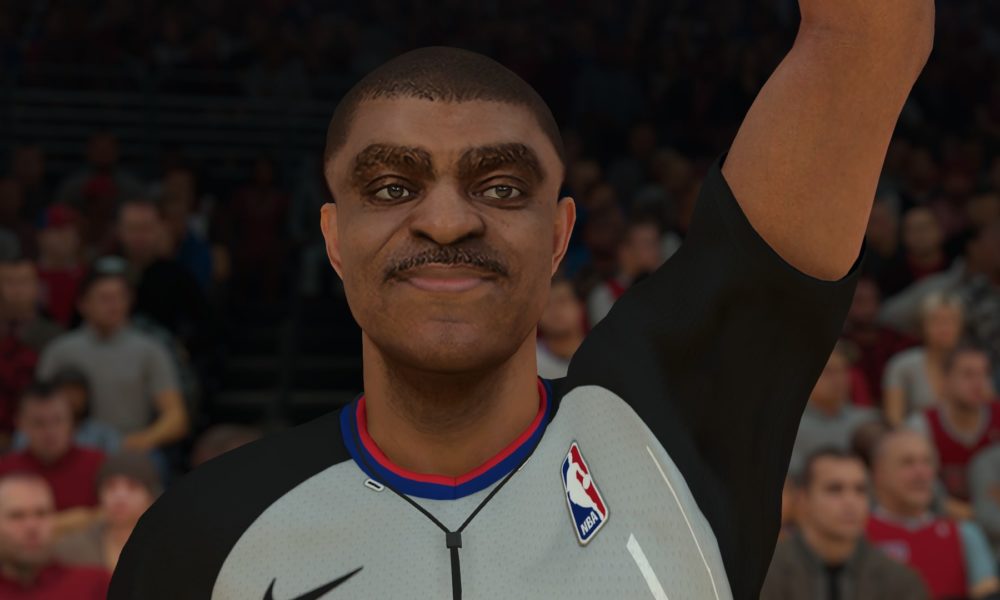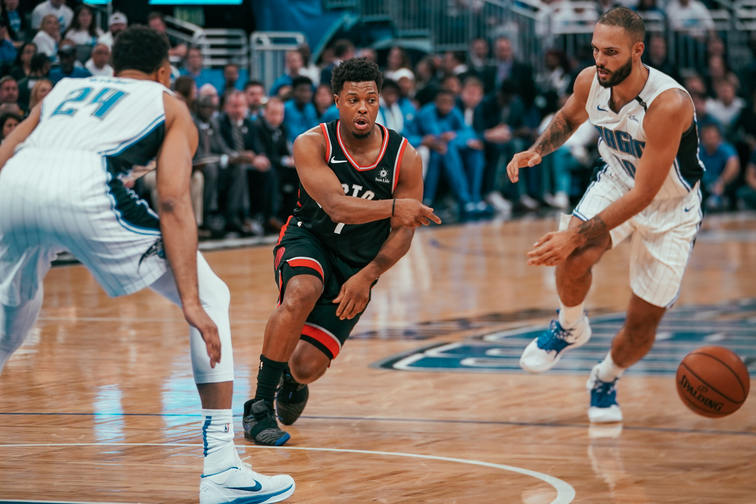Game three was a replay of game two without Kawhi Leonard’s dominance. Leonard wasn’t able to create any separation due to playing despite the flu, but Toronto still won without the best-in-the-league level performance Leonard showed in game two. The Raptors defence remained connected and disciplined, forcing the Magic into their least favourable scenarios on a majority of possessions. Most importantly, however, the difference was Pascal Siakam.
Siakam dominated any and all matchups, shooting perfectly when defended by Aaron Gordon, Terrence Ross, Evan Fournier, or Wes Iwundu. He finished with 30 points (on 20 shots), 11 rebounds, 4 assists, and 0 turnovers. He was especially brilliant in the post, but he did his damage from everywhere, even finally getting some triples to drop. Siakam’s scoring was a microcosm of his season, as he finished with soaring layups, crafty hooks, push shots, flip shots, and everything in between, varying his release points on every shot. How can anyone be expected to guard that? Siakam is growing in front of our eyes. Against all odds, he has somehow been better in the playoffs than he was in the regular season. Screw Most Improved Player awards, this man is coming for Finals Most Valuable Player awards.
Perhaps even more impressive than his offense, Siakam’s defense has been brilliant. He spent time defending every Magic player in game three, holding Orlando’s shooters to 6-of-20 as the primary defender. His ability to maintain his balance and footwork on drives, through switches, and on secondary actions, while finishing possessions with strong contests, is unmatched. So far through the playoffs, Siakam has been Toronto’s best defender. There’s no better example than how Siakam defended a clutch triple attempts from Terrence Ross.
Beyond the Raptors winning both games two and three, some outcomes changed in the latter. Siakam better, Leonard worse, and all that. But the general inputs were almost the same as game two. Toronto used the same defensive gameplan that we’ve seen for 10 straight quarters, with Danny Green checking DJ Augustin, Marc Gasol showing high on Vucevic ball screens, and the team actively switching 1-4. On the other end, Orlando put Terrence Ross into more off-ball screens, and they finally got Vucevic going against Serge Ibaka. Those are nuanced changed, but the Magic really didn’t make any massive changes. They couldn’t; they are a maximized team, playing about as well as their skill allows. If it weren’t for an ice-cold, 5-for-19 performance from Leonard, Toronto would have blown Orlando out of game three, as well.
So what can Orlando change? Their starting lineup will remain the same going into game four. They did their best to involve Jonathan Isaac and Vucevic in game three. Ross finally exploded. Vucevic got going. Leonard was limited. The Raptors still won. Aside from another Augustin transcending-the-realms-of-human-limits game, Orlando has few tools left in the bag. Toronto’s gameplan is solid, and they have dramatically more talent.
Toronto Updates
OG Anunoby (appendectomy) remains out, Chris Boucher (back spasms) is out.
PG: Kyle Lowry, Fred VanVleet, Jeremy Lin
SG: Danny Green, Patrick McCaw, Jodie Meeks
SF: Kawhi Leonard, Norman Powell, Malcolm Miller
PF: Pascal Siakam
C: Marc Gasol, Serge Ibaka, Eric Moreland
Orlando Updates
Nothing new. Mo Bamba (leg), Markelle Fultz (shoulder), and Timofey Mozgov (knee) remain out.
PG: DJ Augustin, Michael Carter-Williams, Jerian Grant
SG: Evan Fournier, Terrence Ross
SF: Aaron Gordon, Wesley Iwundu
PF: Jonathan Isaac, Jarell Martin, Amile Jefferson
C: Nikola Vucevic, Khem Birch
Rotation notes
- Toronto’s starters have swamped Orlando whenever they’ve been on the court. They finished +11 in 17.3 minutes in game three, which brings their total to +47 in 54 minutes. Foul trouble kept Toronto’s starter minute totals low in game three, but Toronto is looking to play their starters for 20-22 minutes per game. Against Orlando, Toronto can expect to win those minutes by double-digits; that’s a tough lead for any opponent to overcome, let alone one as offensively challenged as the Magic.
- Toronto’s next best lineup, plus-minus-wise, is +6 in 11 minutes. The second most-used lineup is +4 in 20 minutes. Both are two-starter looks that Toronto is using as transitional lineups to buy time until the starters can return. Toronto is top-heavy, and they will win games based on starters’ minutes, but they can lose games based on bench minutes. Those are sections of the game that Orlando can target, maybe shifting Vucevic-Ross minutes to play against Toronto’s transitional lineups to try to steal some points there.
- Fred VanVleet’s struggles continue. He is supposed to be Toronto’s best bench player who can replace the stars for stretches or play alongside them. He is supposed to be an elite off-ball mover and shooter while also moonlighting as a secondary initiator. He hasn’t been those things consistently against Orlando. Michael Carter-Williams’ length has bothered VanVleet, but VanVleet has kind of just been missing shots. He has shot 37 percent on open or wide-open triples, which is fine but not up to standard. Even worse, VanVleet has taken 1.7 triples per game after multiple dribbles – which is code for pull-up triples as the ball-handler in the pick-and-roll – and has only connected on 17.6 percent. That’s really where he’s struggled the most. If length bothers him this much, opponents in future rounds will make sure VanVleet sees plenty of it going forward.
- Nurse chose to close the first quarter with a VanVleet-Jodie Meeks-Powell backcourt. That’s sure to lose. It’s a head-scratching decision, but the look has now seen time in all three games, going -2. I don’t understand how Toronto can expect to win those minutes, and -2 is basically a best-case scenario. Toronto could easily get outscored by double digits in only a few short minutes with that lineup against better opponents, so this is a basically a bomb waiting to explode if Nurse continues to use it after Orlando.
- Nurse once again used only Leonard as the backup power forward. There’s weren’t a heck of a lot of minutes to fill, with Siakam playing for 42, but Leonard should be able to thrive in those scenarios. Certainly as a result of Leonard riding the struggle bus last outing, Toronto was outscored by 8 points in 6 minutes with Leonard-at-power forward. Nurse tried everything to get those lineups going, using four different combinations over the course of game three. The only consistent player between them, other than Leonard, was VanVleet. Nothing doing.
- The Leonard-at-power forward minutes over the series, however, are +1. The most-used iteration has been Lowry-VanVleet-Powell-Leonard-Ibaka, which has played 11 minutes over three games. That tiny lineup is undersized at all five positions, but they’ve held their own. They’ve got +6 behind hot shooting, going 4-for-8 from behind the arc.
- Ibaka was up-and-down in game three. It’s clear that this is Gasol’s series, but Ibaka has an important role. Like VanVleet, Ibaka is one of the seven lineup fixtures in Toronto’s arsenal in this series. He was great in game two, but he began game three in poor fashion. He made a series of questionable offensive choices and was frequently out of defensive position. For the first time in the series, Vucevic became a real factor. After a rough stretch, Ibaka settled in and was once again solid.
Assorted
- Checking back in on the Siakam-Isaac matchup, Isaac actually made himself playable in the first quarter of game three, scoring eight points (2-for-5 from deep), and racking up stats across the scoreboard (4r-1a-1s-1b). Lots of people proclaimed Isaac’s coming out party. The problem was that despite succeeding, he fell directly into Toronto’s hands. Toronto won the quarter 26-21 despite Isaac’s heroics. As I wrote after game two, Isaac is an offensive negative for Orlando, and Toronto has been ignoring him to comical extents. Steve Clifford drilled his players into using Isaac more in game three, but he fell off after a hot first quarter. And because he wasn’t stopping Siakam, either, there really wasn’t much use for Isaac. He did not close game three, and Siakam feasted on lesser defenders like Fournier to close the game.
- Leonard’s usage rate was 32.9 in game three despite the flu. It was 33.8 in game two and 31.5 in game one. Toronto will ride or die with their superstar, and that won’t change. Josh Lewenberg has got your Kawhi update:
Kawhi said he’s feeling better. Was dealing with flu-like symptoms in the days leading up to Game 3 but he’s been trying to stay hydrated and is ready to go for tonight. “No excuses here, that’s why I didn’t say nothing about it.”
— Josh Lewenberg (@JLew1050) April 21, 2019
- The officials will be Zach Zarba, Tom Washington, and Karl Lane.
The Line
Toronto is -5.5 after breaking even on -5 in game two. Leonard’s health will go a long way towards determine whether the Raps cover or not. The over-under is a minuscule 207.5.



